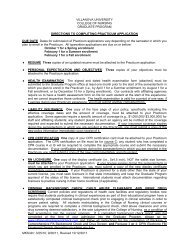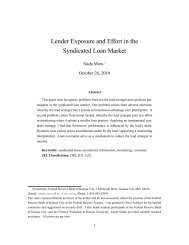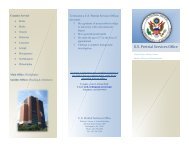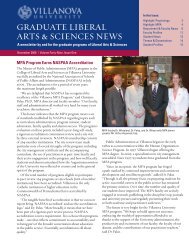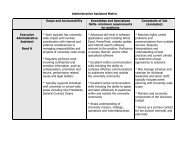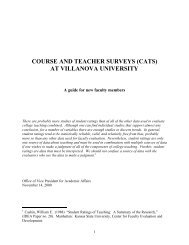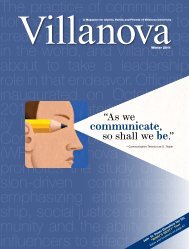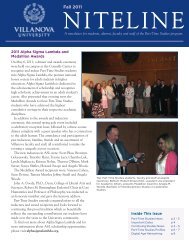- Page 1 and 2: DOCKET NUMBER 2013-1049UNITED STATE
- Page 3 and 4: U.S. Patent No. 682,278issued on Se
- Page 5 and 6: Notice of Reassignment of CaseDue t
- Page 7 and 8: Case 2:10-cv-02225-JAK-JC Document
- Page 9 and 10: Case 2:10-cv-02225-JAK -JC Document
- Page 11 and 12: Case 2:10-cv-02225-JAK-JC Document
- Page 13 and 14: Case 2:10-cv-02225-JAK-JC Document
- Page 15 and 16: Case 2:10-cv-02225-JAK-JC Document
- Page 22 and 23: Case 2:10-cv-02225-JAK-JC Document
- Page 24 and 25: Case 2:10-cv-02225-JAK-JC Document
- Page 26 and 27: Case 2:10-cv-02225-JAK-JC Document
- Page 28 and 29: Case 2:10-cv-02225-JAK-JC Document
- Page 30 and 31: Case 2:10-cv-02225-JAK-JC Document
- Page 32 and 33: Case 2:10-cv-02225-JAK-JC Document
- Page 34 and 35: Case 2:10-cv-02225-JAK-JC Document
- Page 36 and 37: Case 2:10-cv-02225-JAK-JC Document
- Page 38 and 39: Case 2:10-cv-02225-JAK -JC Document
- Page 40 and 41: Case 2:10-cv-02225-JAK -JC Document
- Page 42 and 43: Case 2:10-cv-02225-JAK -JC Document
- Page 44 and 45: Case 2:10-cv-02225-JAK -JC Document
- Page 46 and 47: Case 2:10-cv-02225-JAK -JC Document
- Page 48 and 49: Case 2:10-cv-02225-JAK -JC Document
- Page 50 and 51: Case 2:10-cv-02225-JAK -JC Document
- Page 52 and 53: Case 2:10-cv-02225-JAK -JC Document
- Page 54 and 55: Case 2:10-cv-02225-JAK -JC Document
- Page 57 and 58: Case 2:10-cv-02225-JAK -JC Document
- Page 59 and 60: Case 2:10-cv-02225-JAK -JC Document
- Page 61 and 62: Case 2:10-cv-02225-JAK -JC Document
- Page 63 and 64: Case 2:10-cv-02225-JAK -JC Document
- Page 65 and 66: Case 2:10-cv-02225-JAK -JC Document
- Page 67 and 68:
Case 2:10-cv-02225-JAK -JC Document
- Page 69 and 70:
Case 2:10-cv-02225-JAK -JC Document
- Page 71 and 72:
Case 2:10-cv-02225-JAK -JC Document
- Page 73 and 74:
Case 2:10-cv-02225-JAK -JC Document
- Page 75 and 76:
Case 2:10-cv-02225-JAK -JC Document
- Page 77 and 78:
Case 2:10-cv-02225-JAK -JC Document
- Page 79 and 80:
Case 2:10-cv-02225-JAK -JC Document
- Page 81 and 82:
Case 2:10-cv-02225-JAK -JC Document
- Page 83 and 84:
Case 2:10-cv-02225-JAK -JC Document
- Page 85 and 86:
Case 2:10-cv-02225-JAK -JC Document
- Page 87 and 88:
Case 2:1 0-cv-02225-JAK -JC Documen
- Page 89 and 90:
Ca e 2:1 O-cv-0222'5-JAK -JC Docume
- Page 91 and 92:
Ca e 2:1 0-cv-02225-JAK -JC Documen
- Page 94 and 95:
(12) United States PatentLee1111111
- Page 96 and 97:
d• ~\Jl• r'l0 ......,NerJ'le\Jl
- Page 98 and 99:
US 6,418,936 B1 Bl3 4spond to the n
- Page 100 and 101:
US 6,418,936 B1 Bl785. The metal to
- Page 102 and 103:
UNITED STATES PATENT AND TRADEMARK
- Page 104 and 105:
1,302,047.C, C. HURS1. HURST,TOBACC
- Page 106 and 107:
1,302,047 1,302p47flow of smoke fro
- Page 108 and 109:
u.s. U.S. Patent Oct. 23, 1979 4,17
- Page 110 and 111:
34,171,703and contaminant . trap 16
- Page 112 and 113:
UNITED uNITED STATEs STATES PATENT
- Page 114 and 115:
United States Patent [f9J [l9JSchar
- Page 116 and 117:
3,863,64912SMOKER'S PIPE PlPEThe pr
- Page 118 and 119:
3,863,64956I claim:said bowl member
- Page 120 and 121:
u.s. U.S. Patent Mar. 18, 1980 4,19
- Page 122 and 123:
34.193,411416, wherein said base co
- Page 124 and 125:
United States Patent f19J [19JBall[
- Page 126 and 127:
4,579,1281portion and terminates in
- Page 128 and 129:
54,579,1286ing a first end region p
- Page 130 and 131:
Case: 2:10-cv-02225-JAK-JC As of: 0
- Page 132 and 133:
Case: 2:10-cv-02225-JAK-JC As of: 0
- Page 134 and 135:
Case: 2:10-cv-02225-JAK-JC As of: 0
- Page 136 and 137:
Case: 2:10-cv-02225-JAK-JC As of: 0
- Page 139 and 140:
Case: 2:10-cv-02225-JAK-JC As of: 0
- Page 141 and 142:
Case: 2:10-cv-02225-JAK-JC As of: 0
- Page 143 and 144:
Case: 2:10-cv-02225-JAK-JC As of: 0
- Page 145 and 146:
Case: 2:10-cv-02225-JAK-JC As of: 0
- Page 147 and 148:
Case: 2:10-cv-02225-JAK-JC As of: 0
- Page 149 and 150:
- ~..\· .Case 2:10-cv-02225-VBF -J
- Page 151 and 152:
Case 2:10-cv-02225-VBF -JC Document
- Page 153 and 154:
Case 2:10-cv-02225-VBF -JC Document
- Page 155 and 156:
Case 2:10-cv-02225-VBF -JC Document
- Page 157 and 158:
?\", ' l 11 IIc~\()Ui'JClj..L"'L4=C
- Page 159 and 160:
a~ 13~1 ~I2 The 'mprovement · of c
- Page 161 and 162:
A SHORTENED STATUTORY PERIOD FOR RE
- Page 163 and 164:
.·Claim 12 objected to because of
- Page 165 and 166:
y the tobacco combustion products.
- Page 167 and 168:
' . ~C.LAugust 26,2001 2001C)J~~~(J
- Page 169 and 170:
· DETAILEDIi!,•'DETAILED ACTIONR
- Page 171 and 172:
Case 2:10-cv-02225-VBF -JC Document
- Page 173 and 174:
Case 2:10-cv-02225-VBF -JC Document
- Page 175 and 176:
Case 2:10-cv-02225-VBF -JC Document
- Page 177 and 178:
Case 2:10-cv-02225-VBF -JC Document
- Page 179 and 180:
Case 2:10-cv-02225-VBF -JC Document
- Page 181 and 182:
Case 2:10-cv-02225-VBF -JC Document
- Page 183 and 184:
Case 2:10-cv-02225-VBF -JC Document
- Page 185 and 186:
Case 2:10-cv-02225-VBF -JC Document
- Page 187 and 188:
Case 2:10-cv-02225-VBF -JC Document
- Page 189 and 190:
Case 2:10-cv-02225-VBF-JC Document
- Page 191 and 192:
Case 2:10-cv-02225-VBF-JC Document
- Page 193 and 194:
Patent Local RulesTABLE OF CONTENTS
- Page 195 and 196:
Patent Local Rules(h) If a party cl
- Page 197 and 198:
Patent Local Rules3-5. Disclosure R
- Page 199 and 200:
Case 2:10-cv-02225-VBF-JC Document
- Page 201 and 202:
Case 2:10-cv-02225-VBF-JC Document
- Page 203 and 204:
Case 2:10-cv-02225-VBF-JC Document
- Page 205 and 206:
12345678910111213141516171819202122
- Page 207 and 208:
12345678910111213141516171819202122
- Page 209 and 210:
said turret to said manifold,whereb
- Page 211 and 212:
-"'yJ t'Yt'1;iliL,:-PLAINTIFF 00026
- Page 213 and 214:
-JPLAINTIFF 000266-A207-
- Page 215 and 216:
I'I;..f.fPLAINTIFF 000268-A209-
- Page 217 and 218:
PLAINTIFF 000270--. i-A211-
- Page 219 and 220:
12345678910111213141516171819202122
- Page 221 and 222:
12345678910111213141516171819202122
- Page 223 and 224:
12345678910111213141516171819202122
- Page 225 and 226:
12345678910111213141516171819202122
- Page 227 and 228:
12345678910111213141516171819202122
- Page 229 and 230:
-A223-EXHIBIT APRIOR ART REFERENCES
- Page 231 and 232:
ClaimNumber§102 Prior ArtReference
- Page 233 and 234:
CLAIM 1A metal tobacco pipe in its
- Page 235 and 236:
CLAIM 14CLAIM 15The improvement of
- Page 237 and 238:
Case 2:10-cv-02225-VBF -JC Document
- Page 239 and 240:
Case 2:10-cv-02225-VBF -JC Document
- Page 241 and 242:
Case 2:10-cv-02225-VBF -JC Document
- Page 243 and 244:
Case 2:10-cv-02225-VBF -JC Document
- Page 245 and 246:
Case 2:10-cv-02225-VBF -JC Document
- Page 247 and 248:
Case 2:10-cv-02225-VBF -JC Document
- Page 249 and 250:
Case 2:10-cv-02225-VBF -JC Document
- Page 251 and 252:
Case 2:10-cv-02225-VBF -JC Document
- Page 253 and 254:
Case 2:10-cv-02225-JAK -JC Document
- Page 255 and 256:
Case 2:10-cv-02225-VBF -JC Document
- Page 257 and 258:
Case 2:10-cv-02225-JAK -JC Document
- Page 259 and 260:
Case 2:10-cv-02225-JAK -JC Document
- Page 261 and 262:
Case 2:10-cv-02225-JAK -JC Document
- Page 263 and 264:
Case 2:10-cv-02225-JAK -JC Document
- Page 265 and 266:
Case 2:10-cv-02225-JAK -JC Document
- Page 267 and 268:
Case 2:10-cv-02225-JAK 2:10-cv-0222
- Page 269 and 270:
Case 2:10-cv-02225-JAK 2:10-cv-0222
- Page 271 and 272:
Case 2:10-cv-02225-JAK -JC Document
- Page 273 and 274:
Case 2:10-cv-02225-JAK -JC Document
- Page 275 and 276:
Case 2:10-cv-02225-JAK -JC Document
- Page 277 and 278:
Case 2:10-cv-02225-JAK -JC Document
- Page 279 and 280:
Case 2:10-cv-02225-JAK -JC Document
- Page 281 and 282:
Case 2:10-cv-02225-JAK -JC Document
- Page 283 and 284:
Case 2:10-cv-02225-JAK -JC Document
- Page 285 and 286:
Case 2:10-cv-02225-JAK -JC Document
- Page 287 and 288:
Case 2:10-cv-02225-JAK -JC Document
- Page 289 and 290:
Case 2:10-cv-02225-JAK -JC Document
- Page 291 and 292:
Case 2:10-cv-02225-JAK -JC Document
- Page 293 and 294:
Case 2:10-cv-02225-JAK -JC Document
- Page 295 and 296:
Case 2:10-cv-02225-JAK -JC Document
- Page 297 and 298:
Case 2:10-cv-02225-JAK -JC -JC Docu
- Page 299 and 300:
Case 2:10-cv-02225-JAK -JC -JC Docu
- Page 301 and 302:
Case 2:10-cv-02225-JAK -JC -JC Docu
- Page 303 and 304:
Case 2:10-cv-02225-JAK -JC Document
- Page 305 and 306:
1/11/12 Law Offices Of David M. Dus
- Page 307 and 308:
Case 2:10-cv-02225-JAK -JC Document
- Page 309 and 310:
Case 2:10-cv-02225-JAK -JC Document
- Page 311 and 312:
Case 2:10-cv-02225-JAK -JC Document
- Page 313 and 314:
Case 2:10-cv-02225-JAK -JC Document
- Page 315 and 316:
Case 2:10-cv-02225-JAK -JC Document
- Page 317 and 318:
Case 2:10-cv-02225-JAK -JC Document
- Page 319 and 320:
Case 2:10-cv-02225-JAK -JC Document
- Page 321 and 322:
Case 2:10-cv-02225-JAK -JC Document
- Page 323 and 324:
Case 2:10-cv-02225-JAK -JC Document
- Page 325 and 326:
Case 2:10-cv-02225-JAK -JC Document
- Page 327 and 328:
Case 2:10-cv-02225-JAK -JC Document
- Page 329 and 330:
Case 2:10-cv-02225-JAK -JC Document
- Page 331 and 332:
Case 2:10-cv-02225-JAK -JC Document
- Page 333:
PROOF OF SERVICEI am employed in th



